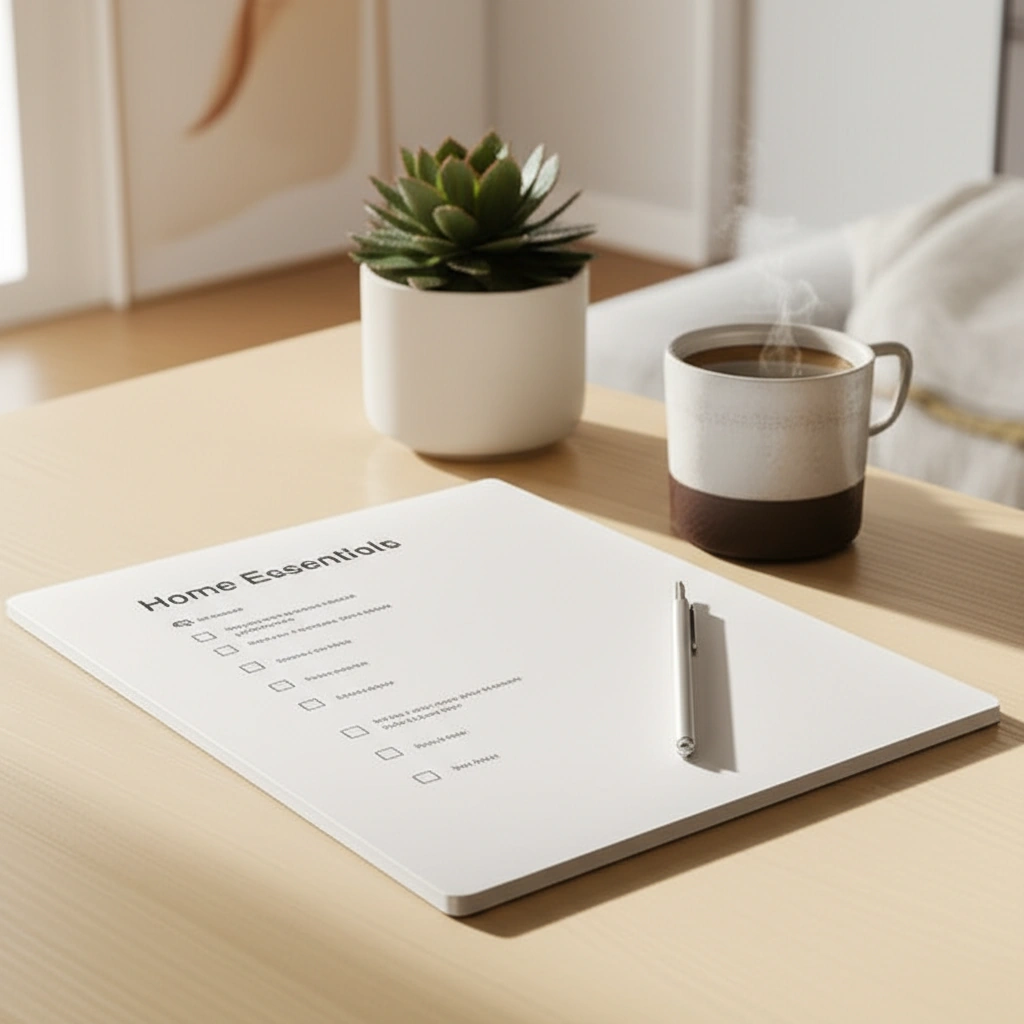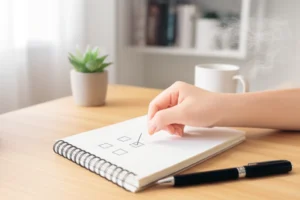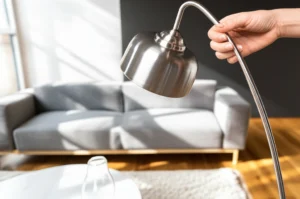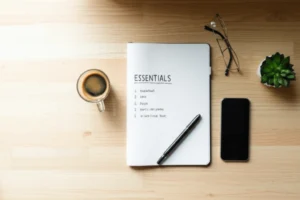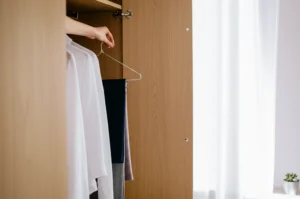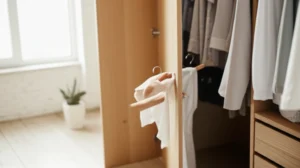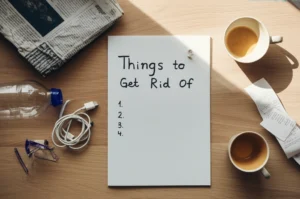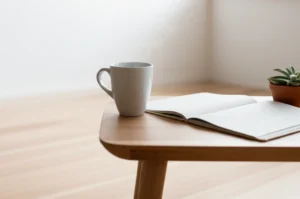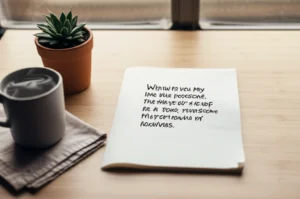Ready for a serious breath of fresh air… in your own home? If you’ve ever wished your mess would just, I don’t know, evaporate overnight, this minimalist home checklist is exactly what you need. I’m talking the must-have, sanity-saving, less-is-way-more style guide to paring down your space—without feeling like you’re moving into a museum or giving up all your comfort. Let’s skip the “why minimalism matters” lecture. Here’s your shortcut to a home that feels lighter, cleaner, and way, way more you.
Look, this isn’t just a list for showing off on Instagram. If the idea of decluttering makes your stomach clench, you’re in good company—most of us get emotional about our stuff. There are wins (less stress, more time, a home you’re proud to show off) and some hurdles (goodbye, sentimental trinkets). But this is real, and it works. Grab a coffee and let’s dig in.
Why This Checklist Works
What Are We All After?
We want less clutter, sure. But what we really want are clear steps to an easier life. So think of this minimalist home checklist as your no-nonsense friend—someone who’ll give you fast wins and the kind of clarity Marie Kondo could only dream of. You’ll tackle the mess room by room, set up habits you can actually stick with, and finally create the space to relax (or, be honest, just find your keys in the morning).
The Benefits — With No Fine Print
Imagine waking up and not tripping over yesterday’s half-folded laundry. Or actually seeing your kitchen counters. That’s not just a Pinterest dream. Studies show that clinging to stuff ramps up stress and kills focus, while streamlined homes boost your mood and make cleaning—well, almost funaccording to Zen Habits. Want a practical bonus? Fewer things to tidy means more time to binge your favorite show, guilt-free.
But Hey—Let’s Keep It Real
There are trade-offs. You’ll run into “But what if I need this someday?” and “I can’t possibly part with those high school jeans.” That’s normal. The trick? Start by reducing, not eliminating. No one’s asking you to toss Grandma’s quilt or clear every shelf. Try a box for “maybes”—move things out of sight for a couple months. Miss them? Keep ’em. Otherwise, let them go. This is the safest, most regret-proof path—trust me, and according to Becoming Minimalist, it works wonders.
How To Start (Seriously: Don’t Overthink It)
Define Your “Why”
If you want your minimalist home to last, steal this tip: write a one-sentence mission. Is it “I want less chaos in my mornings”? Maybe, “I want my home to feel like a spa.” Whatever it is, jot it down and stick it where you’ll see it. Your checklist will make way more sense—promise.
Your Mini Audit
First, walk through your place and snap some photos. I know, it’s awkward (especially if there’s laundry lurking). But these shots will become your before-and-after proof. And if you cringe at the “before,” all the better—use it to fuel your progress. If a space stresses you out (cue: the entryway pileup?), write down what you want to feel when you walk in instead. That’s where you start.
Grab Your Gear
You’ll need: a few boxes (for donate, trash, keep, and “I’m not sure yet”), a marker for labels, maybe a timer (to keep things moving), and a strong playlist. That’s it. Don’t overcomplicate it—minimalism starts with less, right?
Minimalist Home Checklist (Room By Room)
Here comes the fun—not theoretical, but a roll-up-your-sleeves-and-do-it guide. You can tackle one room a day, or just start wherever you feel the biggest pinch.
Living Room
- Clear all flat surfaces. If something’s always in your way (remotes, stacks of mail, weird decorative pebbles), give it a home or say goodbye.
- One focal point—like a gorgeous vase or a bold piece of art. That’s it.
- Slim down the entertainment center. Lose the old DVDs, free up cords, and pare electronics to the essentials.
- Limit cushions and blankets to what you really use, not just what looks good in catalogs.
- For inspiration and ideas, check out minimalist home design—it’s where style meets sanity.
Kitchen
- Empty every cabinet (yes, every one). Group like with like—how many spatulas do you truly need?
- Keep just the essentials: a good pan, knife, a couple of pots. Donate or toss the rest.
- Edit your coffee mugs. (We both know you reach for the same favorite… every morning.)
- Appliances: only what you use weekly. The bread maker you used twice in 2019? Let it find a better home.
Bedroom & Closet
- Clothes: keep only what you love, use, or need. Let go of duplicates, “someday” jeans, and guilt purchases.
- Try a capsule wardrobe—think seasonal rotation and the ‘hanger rule’ (turn all hangers one way, flip when worn; donate what’s left after 6 months).
- Sentimental items? Limit to a small box, and store it somewhere intentional. If something’s precious, take a photo and tuck the memory away. For more tips, see this handy becoming a minimalist checklist.
Bathroom & Linen Closet
- Clear surfaces. Store daily-use items only—hide the rest in drawers or baskets.
- Collect and toss expired meds and half-used products you never liked.
- Streamline towels: two per person, max. The rest can be donated to animal shelters.
Home Office & Paper (Ugh, Paper…)
- Separate: vital documents, action items, and “does this need to exist?” piles.
- Keep one or two pens on your desk. The rest: into a donate pile at warp speed.
- Go digital where possible. Shred what you don’t need. Set a 1-in-1-out rule for all incoming paper.
Storage Areas & Garage
- These are danger zones for “maybe I’ll need this someday” thinking.
- Set a function for each area (holiday, tools, keepsakes). If you’ve forgotten it exists, you probably don’t need it.
- Label everything you keep. This really helps future-you stay organized.
Kids’ Spaces
- Less is more—kids thrive with fewer toys. Rotate favorites and store extras out of sight.
- Let your kids help choose what to keep. When they’re in charge, saying goodbye to stuff feels empowering, not like a punishment.
Entryway & Everyday Habits
- Set up a “drop zone.” Limit it to essentials (keys, bag, shoes).
- Try the two-minute tidy—anything you can put away in two minutes, do it right then.
Your 30-Day Minimalist Game Plan
“Rome wasn’t decluttered in a day.” If you’re asking how to become a minimalist in 30 days, here’s my fast-track playbook. No stress, just 15-30 minutes a day, one small task at a time.
| Week | Focus | Key Actions |
|---|---|---|
| 1 | Quick Wins & Mindset | Entry/exit areas, set your why, clear one surface daily |
| 2 | Core Rooms | Living room, kitchen, start closet clearout |
| 3 | Storage & Office | Papers, garage, office catch-up |
| 4 | Refine and Maintain | Review progress, donate items, celebrate wins! |
Track progress with before-and-after pics, cross off rooms as you finish, and check in with yourself: do you feel lighter? Is it easier to keep things tidy? Any surprises?
Decision Rules That Save Regret
The “Four-Question” Test
Stuck? Ask: Do I use this? Do I love it? Do I need it? Could I replace it for under $20 in under 20 minutes? If not, it’s probably only taking up space and mental energy. I still remember getting rid of my second slow cooker—I’d kept it “in case the whole family moved in”—and not once have I missed it.
Try-Box Strategy
Feeling nervous about letting things go? Use a try-box: pack items away for a few months. Didn’t reach for them? It’s safe to let them go. It’s less scary than permanent decisions and removes the what-ifs that can freeze you in your tracksaccording to Becoming Minimalist.
Smart Disposals
For “good stuff,” donate to a local cause, sell what you can, or hand down to friends. Just don’t fall into the trap of “I’ll sell this someday” for everything. Out is always better than “maybe one day…”
Minimal Doesn’t Mean Empty: Design & Storage Tips
A minimalist house interior can look warm, stylish, and inviting. Use negative space intentionally—let surfaces breathe, and focus on a few wow pieces. Stick with useful, loved furniture and soft textures—think a streamlined couch with a cozy blanket, or a bare shelf with one stand-out photo. If you want real-life inspiration, try browsing minimalist living examples and see how others balance simplicity with personality.
If you love design tips, there’s a world of clever ideas at minimalist house interior. You’ll notice that a minimalist home decor living room isn’t about sterile white walls, but about pieces that have space to shine and make you feel at ease.
Advanced Habits That Keep the Clutter Gone
Here’s a secret: even once you’ve decluttered, stuff sneaks back in. So set a few gentle rules to keep your hard-won peace:
- Try one-in, one-out: if you buy a new shirt, donate an old one.
- Set a monthly “mini-declutter” date—even 10 minutes keeps things under control.
- Never rush big buys. If it costs more than a certain amount (say $50), sleep on it for 48 hours. Most “must-haves” will seem less urgent by morning.
If you ever feel stuck—if the “stuff” that’s left feels overwhelming, or you run into truly hard-to-part-with items—don’t hesitate to chat with a professional organizer, or even a counselor. Letting go can be hard when there are deeper feelings attached, and that’s okay.
Printable & Digital Tools
Want to keep the momentum? Create (or download) a printable version of your minimalist home checklist. Or, log items in a simple spreadsheet. Most importantly, find what style of tracking makes you excited to keep going—whether that’s ticking off boxes with a satisfying pen, or keeping a digital “before and after” photo album.
Wrapping Up: Your New Calm, Cozy Space Awaits
So here’s the deal—you really can make your space feel lighter, brighter, and 100% more “you” with this minimalist home checklist. Remember, define why you want less (not just less stuff, but more room for living), start small, and make your way through each area at your own pace.
Let yourself pause and enjoy the wins—clear countertops, a closet of clothes you love, that sense of achievement at the end of the day. The reduce-first approach keeps things regret-free, and one 15-minute action is all it ever takes to start. Somewhere between the messes and the empty shelves, trust yourself to find your perfect balance.
Try a single “now” task—maybe clear that one crowded drawer, or say goodbye to the twenty mugs you never use. And if you’re up for sharing—what’s the weirdest or most surprising thing you’ve let go, and how did it feel afterward? I’d love to hear your story.

